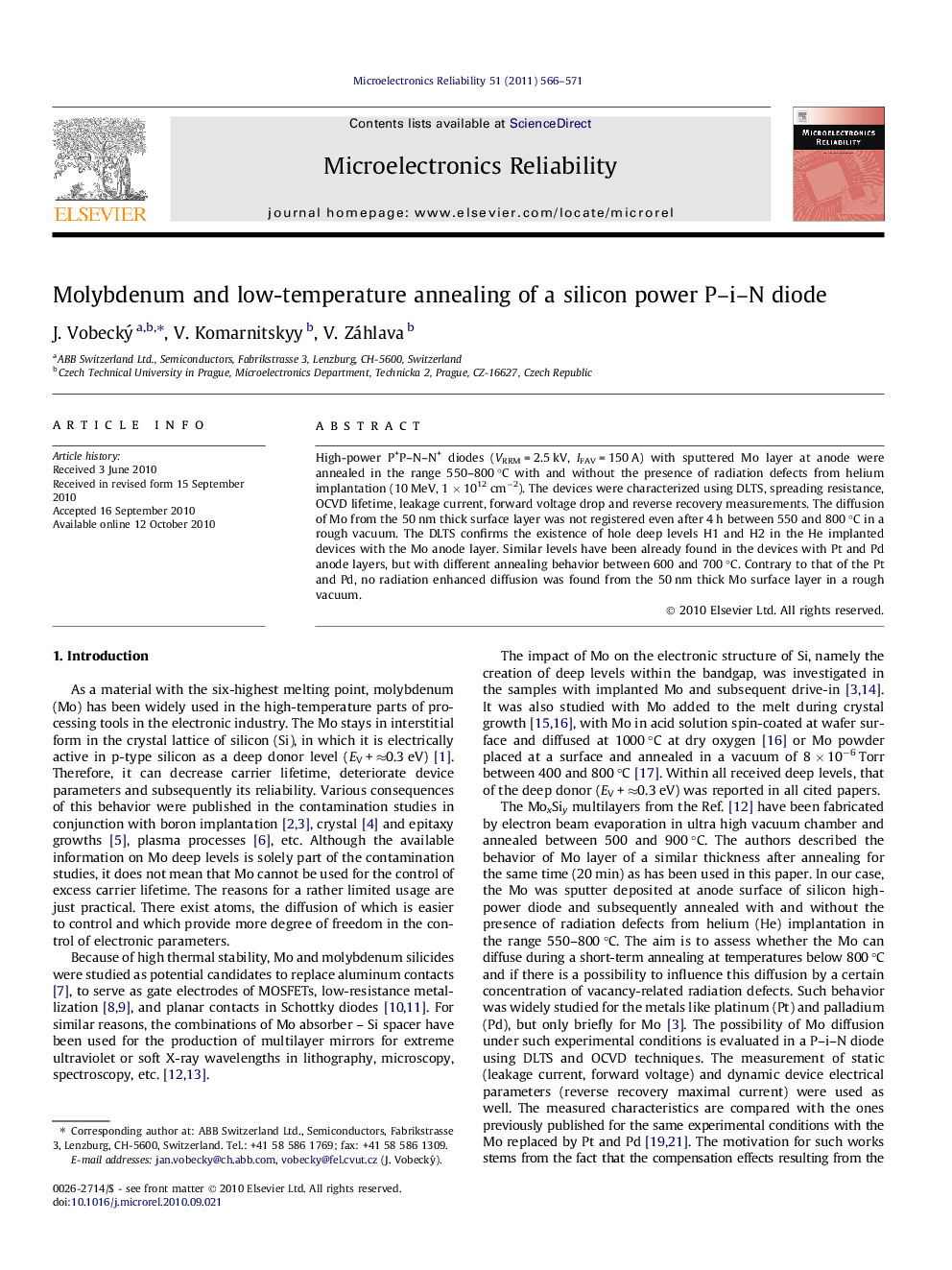| Article ID | Journal | Published Year | Pages | File Type |
|---|---|---|---|---|
| 549447 | Microelectronics Reliability | 2011 | 6 Pages |
High-power P+P–N–N+ diodes (VRRM = 2.5 kV, IFAV = 150 A) with sputtered Mo layer at anode were annealed in the range 550–800 °C with and without the presence of radiation defects from helium implantation (10 MeV, 1 × 1012 cm−2). The devices were characterized using DLTS, spreading resistance, OCVD lifetime, leakage current, forward voltage drop and reverse recovery measurements. The diffusion of Mo from the 50 nm thick surface layer was not registered even after 4 h between 550 and 800 °C in a rough vacuum. The DLTS confirms the existence of hole deep levels H1 and H2 in the He implanted devices with the Mo anode layer. Similar levels have been already found in the devices with Pt and Pd anode layers, but with different annealing behavior between 600 and 700 °C. Contrary to that of the Pt and Pd, no radiation enhanced diffusion was found from the 50 nm thick Mo surface layer in a rough vacuum.
